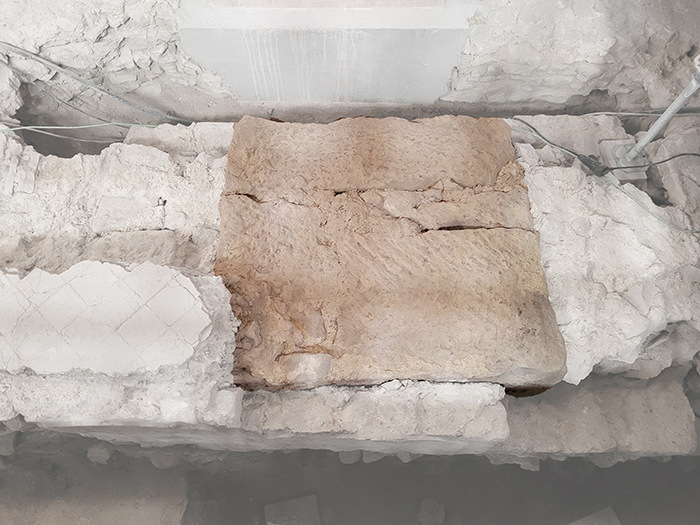
has been greyed out to better identify the element. Full-size picture is available here.
© Igor Bajena
The reconstruction process began in 2018 with the collection of source materials. Written sources from that period only mention the existence of the church, but not its form. Therefore, information was gathered from archaeological work conducted at the church since 2013 under the guidance of Dr. Guido Faccani, who became the main consultant for this reconstruction. Layers from the 7th-8th centuries were located nearly 2.8 meters below the current floor level (Faccani, 2019). It is likely that the building from that period was demolished to the floor level to provide a foundation for the next phase of reconstruction in the 10th century.
Excavations uncovered fragments of exterior walls on the north, west, and south sides, but not on the east side. The location of the western wall was offset by nearly 15 meters from the current location of the church's western exterior wall. The positions of the east and west walls are roughly in the middle of the side aisles of the current building. An important finding in the reconstruction was the discovery of three rectangular pillar foundations that delineated the division of the building into the nave and side aisles (Faccani, 2020).

On the north side, fragments of two walls perpendicular to the church building were found, suggesting that another building might have been directly attached to the church. Additionally, fragments of other walls were discovered in areas to the south and west of the church's outline, though they were not in direct contact with the church.
────────────────────────────────────────
BIBLIOGRAPHY
1. Faccani, G. (2020). St. Johannis von Mainz: archäologische Präliminarien zur Baugeschichte einer evangelischen Gemeindekirche. In: S. Lomartire, Archeologia del territorio, 63-92.